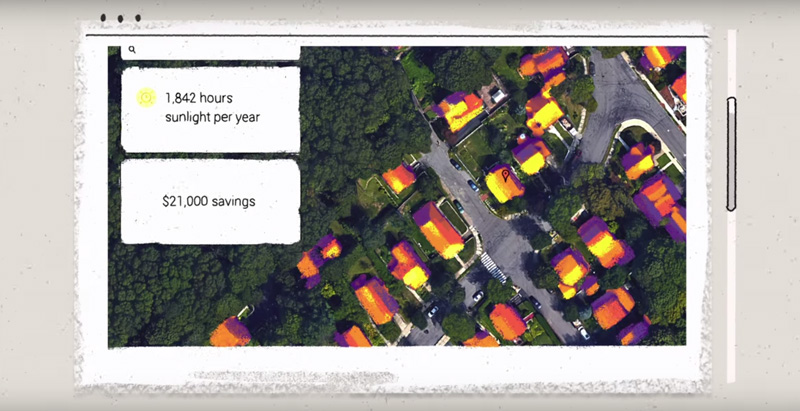Deciding how much you can save on projects if you opt for solar energy is getting easier and easier. Primarily aimed at homeowners and single-family residential developers, but also useful for commercial properties, a team of Google engineers launched a new tool that can help the doubtful better understand if they will be able to bring big savings if they convert to solar energy.
Titled Project Sunroof, the tool offers high-resolution aerial maps, like the one used in Google Earth, to estimate the total sunlight a rooftop receives throughout the year, CityLab reports.
Users can then learn how much they can expect to save with solar panels, and even evaluate different financing plans.
One such application already on the market is the MIT-born MapDwell, which launched two years ago. Architizer reports that MapDwell has announced the expansion of the service into New York City’s Five Boroughs.
“This tremendous project covers over one million buildings and reveals enough high-yield photovoltaic potential to deliver over five million megawatt-hours of energy per year,” Architizer reports.
Related Stories
| Jan 2, 2013
Recent books take on net-zero energy,‘transformational thought’
We’re not in the habit of recommending books in these pages, but we could not ignore two recent noteworthy publications.
| Dec 13, 2012
Survey: energy-efficient building technologies to drive long-term energy savings
Greater adoption of existing efficiency technologies, enabled by chemistry, could lower energy use in buildings by 41% by 2050, according to new report.
| Nov 14, 2012
U.S. Green Building Council partners with Pearson
Partnership will help further USGBC’s mission by advancing green building education
| Nov 14, 2012
USGBC's Greenbuild International Conference and Expo kicks off in San Francisco
7,000 members of the green building industry convene for opening plenary headlined by "Morning Joe" co-hosts Mika Brzezinksi and Joe Scarborough
| Nov 13, 2012
Turner Construction’s green building Market Barometer reveals new findings on green building and certification
Respondents indicated a widespread commitment to sustainable practices
| Nov 12, 2012
Legrand Shares New Energy Savings Resources Aimed at Promoting Better Energy Management
Company Announces the First in a Set of Comprehensive Resources to Help Companies Take Steps to Improve Energy Performance
| Sep 11, 2012
New York City releases first energy benchmarking data for private buildings
City is first in U.S. to disclose private-sector building energy data from a mandatory benchmarking policy.
| Jul 12, 2012
Chicago Public Schools names Lend Lease team as construction manager
Under this Capital Improvement Program, the Lend Lease team will be responsible for renovation and life safety work at over 100 Chicago Public Schools across the City.














